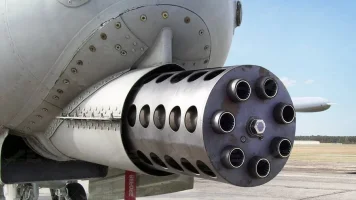- Views: 2K
- Replies: 21
As India continues its comprehensive military modernization efforts, the American-made Lockheed Martin F-35A Lightning II has re-emerged in strategic conversations as a potential candidate for the Indian Air Force (IAF).
While no official proposal has been made, defence analysts suggest that any potential acquisition would be contingent on India securing a highly customized version of the stealth fighter, rather than an off-the-shelf export model.
The success of such a deal would depend on critical negotiations for local manufacturing support and the integration of specific, cutting-edge technologies vital for the Indo-Pacific region.
For the F-35A to be a viable option for India's long-pending Multi-Role Fighter Aircraft (MRFA) requirement, experts argue that New Delhi must insist on a configuration tailored to its unique operational and strategic needs.
Such a variant would need to deliver superior survivability, extended range, and enhanced lethality to effectively address the complex security landscape of the region.
Essential Systems for a Future-Ready IAF Fighter
A specially configured F-35A for India would require the integration of the most advanced systems available. This includes the next-generation AN/APG-85 AESA radar, which provides a significant leap in tracking range and electronic warfare capabilities compared to older systems.This would be crucial for operations in contested airspace, such as along the Line of Actual Control (LAC) or over the vast Indian Ocean.
Furthermore, a critical demand would be a new engine, such as the General Electric XA100 or Pratt & Whitney XA101 adaptive cycle engine.
These power plants offer up to 25% greater thrust and significantly improved fuel efficiency, enabling "supercruise" (supersonic flight without engaging fuel-guzzling afterburners) and better thermal management to enhance the aircraft's stealth profile.
Advanced Weaponry and Indigenous Integration
To maintain air superiority, the integration of long-range missiles like the AIM-260 Joint Advanced Tactical Missile (JATM) would be non-negotiable. The AIM-260 is specifically designed to counter advanced threats posed by missiles such as China's PL-15.For short-range combat, compatibility with the ASRAAM, already in the IAF's inventory for its Su-30MKI and Jaguar fleets, would streamline logistics and training.
For deep-strike missions, the aircraft would need to carry stealthy cruise missiles like the AGM-158B JASSM-ER, capable of hitting fortified targets over 900 km away.
Other essential munitions include the AGM-88G AARGM-ER anti-radiation missile for suppressing enemy air defences and various precision-guided bombs like the GBU-39 Small Diameter Bomb (SDB II) and AGM-154 JSOW, which allow for precise strikes from a safe distance.
Crucially, India would need to ensure the integration of its own domestically developed and proven weapons. This includes the SPICE-2000 guidance kits, famously used in the 2019 Balakot airstrikes, and the DRDO-developed Smart Anti-Airfield Weapon (SAAW).
The Israeli Precedent and the Importance of MRO
Analysts point to Israel's F-35I "Adir" as a successful blueprint for this kind of customisation. Israel negotiated the integration of its own indigenous electronic warfare (EW) systems, data links, and established its own maintenance autonomy.Following this precedent, India would need to insist on integrating its own advanced communication suites, like the BNET Software-Defined Radio, and EW systems developed by the Defence Research and Development Organisation (DRDO).
Perhaps the most vital condition for any deal would be the establishment of a local Maintenance, Repair, and Overhaul (MRO) facility in India. This would grant the IAF operational sovereignty, reduce long-term sustainment costs, and prevent dependency on global supply chains for critical repairs.
This model follows the precedent set by other major defence deals, including the recent agreement for servicing Rafale engines in India, underscoring its importance for the nation's strategic autonomy.

